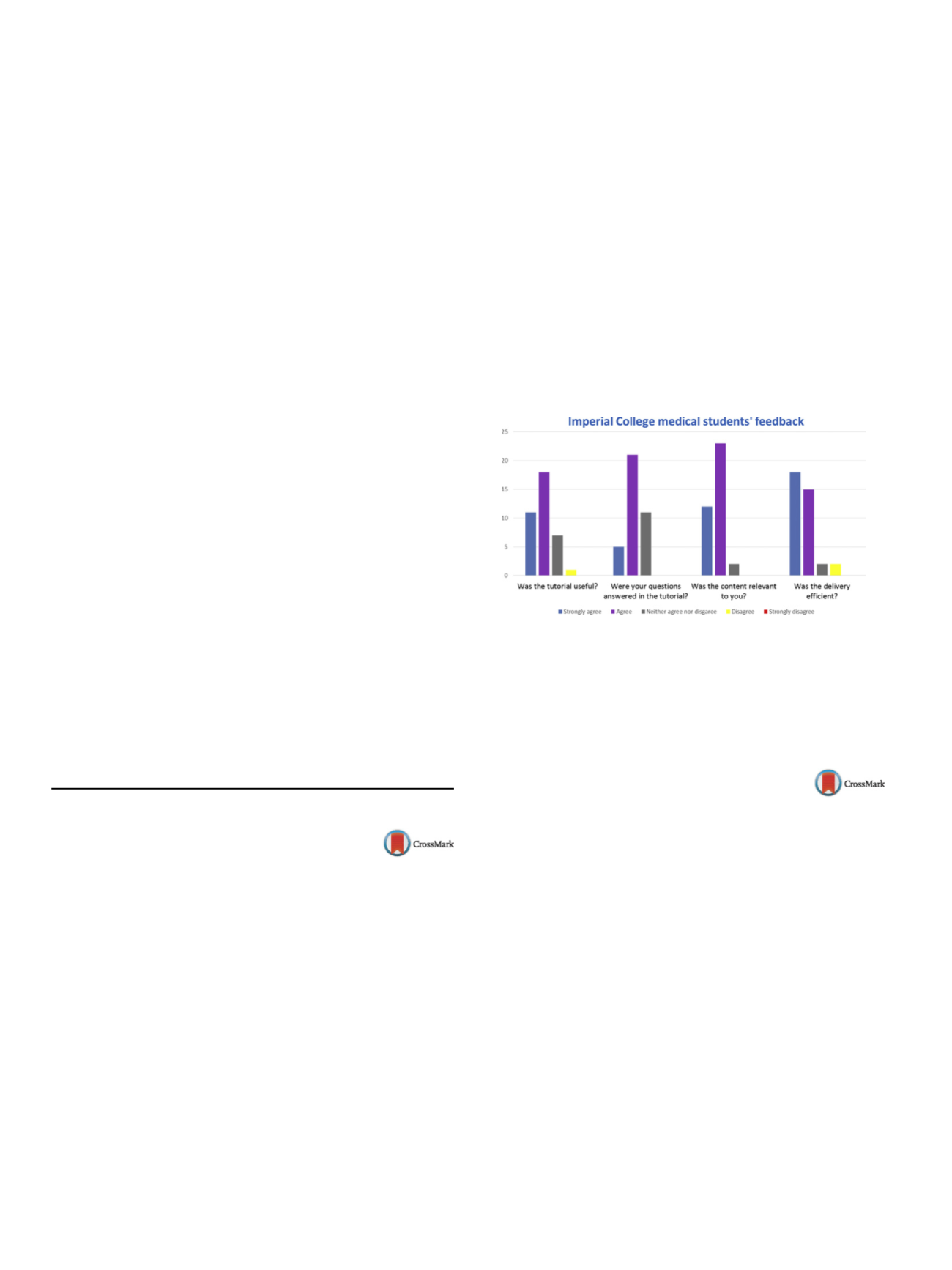

S296
25th European Congress of Psychiatry / European Psychiatry 41S (2017) S238–S302
2
Center for Health and Medical Psychology, JPS, Psychology, Örebro
University, Örebro, Sweden
∗
Corresponding author.
Introduction
There is a need of identifying predictors of suicide.
With effective treatment interventions for those at highest risk,
suicide can be prevented.
Aim
To investigate variables possibly associated with suicide, by
comparing patients in psychiatry deceased by suicide to matched
controls. We compared the psychiatric ward consumption two
years prior to suicide, previous medical and psychological treat-
ments, somatic co-morbidity and the professions of health care staff
in previous visits.
Method
The 153 suicide cases, 101 (66%) men and 52 (34%)
women, aged between 13 and 96 years, were identified from the
National Cause of death registry. All cases had previous contact in
psychiatry in Örebro County and died between January 1st 2007
through December 31st 2013. Each case had one gender-, age- and
diagnosis matched patient control from psychiatry. Data on care
usage were collected from medical records. Correlations were cal-
culated between ward variables and the outcome variable suicide
yes/no. Variables significantly correlated to suicide were used in an
adjusted logistic regression model to analyse possible associations
with suicide.
Results
Among the cases deceased by suicide, we found sig-
nificantly fewer psychiatric outpatient visits (
P
< .01), a smaller
amount receiving systematic psychological treatment (
P
< .01), less
pharmacological interventions (
P
< .01) and a smaller amount of
treatment provided by a multi-professional team (
P
< .01). Less
occurrence of psychological treatment (OR(adj): 0.459; 95% CI
0.224–0.874,
P
< .05) was significantly associated to suicide.
Conclusions
Results indicate that not only repeated visits in
psychiatric care, but the content of visits (i.e. psychological inter-
ventions) seems to make an important difference between life and
death.
Disclosure of interest
The authors have not supplied their decla-
ration of competing interest.
http://dx.doi.org/10.1016/j.eurpsy.2017.02.173e-Poster Walk: Training in psychiatry
EW0560
Quality improvement project:
Mentoring, career advice and
placement introduction session for
year 5 imperial college medical
students. Should induction go beyond
facts and numbers?
O. Agalioti
∗
, S. Nayrouz
West London Mental Health NHS Trust, Psychiatry, London, United
Kingdom
∗
Corresponding author.
Introduction
Feedback received from previous rotations of year
5 Imperial College medical students inWest London Mental Health
NHS Trust has consistently shown that medical students feel uncer-
tain about what to expect in their psychiatric placements and are
sceptical about psychiatry as a future career option. This prevents
them from maximizing the educational benefit and potential in
their training.
Aims and objectives
Tutorial aims to prepare medical students for
their psychiatric placements and create the opportunity for infor-
mal discussion about psychiatry as future career option. The session
aspires to motivate students to be more involved and active partic-
ipants and invite them to think about their future career option at
an early stage.
Methodology
A 1-hour tutorial has been added to medical stu-
dents’ induction in two successive rotations (July–October 2016).
Thirty-seven (37) medical students have attended the tutorial so
far. Tutorial provides information about psychiatric placements,
learning opportunities as well as structural and operational issues.
Besides, it encourages discussions about psychiatry as a future
career option, informing students about psychiatric sub-specialties,
career pathways and NHS operational structure. Feedback ques-
tionnaire is handed over at the end.
Results
Data were collected and analysed and findings are out-
lined in the diagram below
( Fig. 1 ).Conclusions and recommendation
The majority of medical stu-
dents have feedback they found tutorial relevant and useful.
Current tutorial formula will be revised based on feedback collated
so far.
Findings are going to be shared with local Undergraduate Educa-
tional Committee and Imperial College medical school board.
Fig. 1
Imperial College medical students’ feedback.
Disclosure of interest
The authors have not supplied their decla-
ration of competing interest.
http://dx.doi.org/10.1016/j.eurpsy.2017.02.174EW0561
Workplace assessment in crisis? – The
way forward
H. Al-Taiar
MRCPsych–SFHEA, Forensic Psychiatry, Oxford, United Kingdom
Introduction
A recent Royal College of Physicians’ (RCP) study
on assessment raises serious questions for workplace assessment.
To address these, a system that bridges the gap from compe-
tence to performance and integrates supervised learning events
(SLEs) that are formative in purpose with summative assessment
of performance by entrustable professional activities (EPAs) is rec-
ommended.
Aims and objectives
As a working group on assessment in psy-
chiatry, we were interested in the RCP findings which represent a
significant milestone in studies of workplace assessment. The RCP
aims were to evaluate the feasibility, validity and educational value
of using existing WPBA tools but for different assessment purposes
and processes.
Results
These were based on the General Medical Council (GMC)
working party on assessment. The RCP revised its assessment
processes to differentiate between assessments of development
and performance. The former are formative and aim to identify a
trainee’s areas of strength and development; the latter are sum-
mative and aim to determine fitness to progress. Of note is that the
sameworkplace based assessment (WPBA) tool canbe used for each
type of assessment; the assessment’s purpose is the discriminating
factor.


















